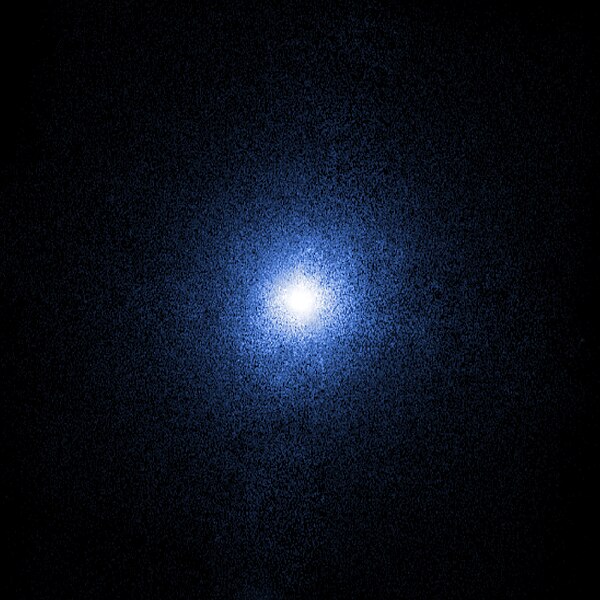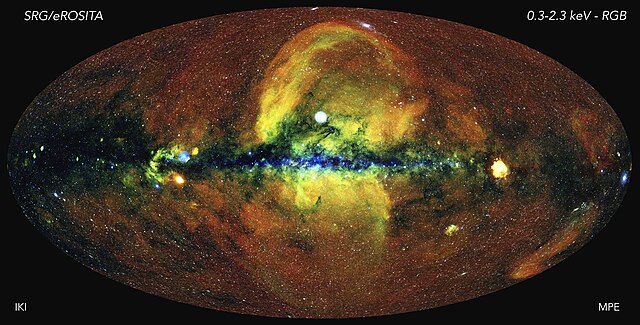Cygnus X-1 (abbreviated Cyg X-1) is a galactic X-ray source in the constellation Cygnus and was the first such source widely accepted to be a black hole. It was discovered in 1965 during a rocket flight and is one of the strongest X-ray sources detectable from Earth, producing a peak X-ray flux density of 2.3×10−23 W/(m2⋅Hz) (2.3×103 jansky). It remains among the most studied astronomical objects in its class. The compact object is now estimated to have a mass about 21.2 times the mass of the Sun and has been shown to be too small to be any known kind of normal star or other likely object besides a black hole. If so, the radius of its event horizon has 300 km "as upper bound to the linear dimension of the source region" of occasional X-ray bursts lasting only for about 1 ms.
X-ray image of Cygnus X-1 taken by a balloon-borne telescope, the High-Energy Replicated Optics (HERO) project
Chandra X-ray Observatory image of Cygnus X-1
A Chandra X-ray spectrum of Cygnus X-1 showing a characteristic peak near 6.4 keV due to ionized iron in the accretion disk, but the peak is gravitationally red-shifted, broadened by the Doppler effect, and skewed toward lower energies
NASA's "Galaxy of Horrors" poster for Cygnus X-1
Cygnus is a northern constellation on the plane of the Milky Way, deriving its name from the Latinized Greek word for swan. Cygnus is one of the most recognizable constellations of the northern summer and autumn, and it features a prominent asterism known as the Northern Cross. Cygnus was among the 48 constellations listed by the 2nd century astronomer Ptolemy, and it remains one of the 88 modern constellations.
Cygnus as depicted in Urania's Mirror, a set of constellation cards published in London c.1825. Surrounding it are Lacerta, Vulpecula and Lyra.
Cygnus is superimposed as main stars constellation over a photo of the according section of the night sky
On the left image side are the bright North America Nebula (left bright part) with Sadr region (right bright part) in the Cygnus X region, visually interrupted by the Cygnus rift, of the Cygnus constellation, in this x-ray image.
The constellation Cygnus as it can be seen by the naked eye, with the Northern Cross in the middle.








